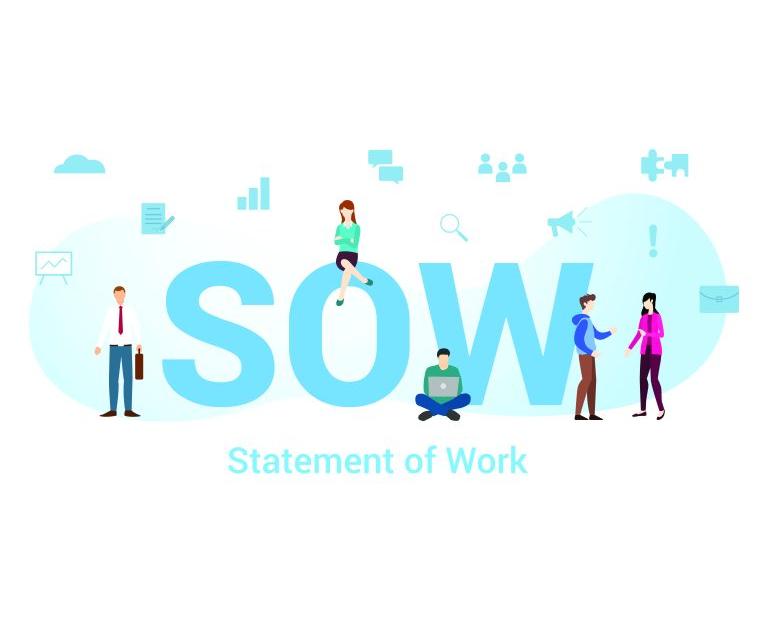Tools to boost your internal hiring success rate for sales and recruiting staff
Hiring salespeople is a high-stakes game. Nothing can propel a company forward like the right sales talent at the right time. Conversely, a poor sales hire can be a financial disaster for a company, to the tune of as much as $250,000 in sunk costs and lost revenue.
Yet as high as the stakes may be, many companies play the hiring game with little more strategy than a crapshoot – hiring with overarching strategy, conducting unstructured interviews with an overreliance on past experience and superficial qualities like physical appearance … essentially following gut instincts to bad decisions.
In a webinar presented by TechServe Alliance, business strategy and executive coach Tom Nunn outlined a seven-step framework for sales and recruitment hiring that any company can use to hire strategically, increasing the likelihood of recruiting that game-changing talent.
Step 1: People Pipeline Sourcing
Hiring is a kind of sales. You’re selling talent on the value of your company to their career. And as with any sales process, it starts with a pipeline of leads. A constant stream of potential new hires that gives Hiring Managers and HR plentiful options to choose from — and a better chance of the perfect fit.
It’s not just the job of HR or recruiting to fill this pipeline with potential applicants — it’s the whole organization. “Every person in the company, from the owner to the leaders to all staff, need to be ready, willing, and able to network and be on the lookout for viable candidates,” Nunn said.
Nunn suggested creating a culture of referrals, including bonuses and rewards for employees who refer a potential new hire.
Step 2: Initial Screening
Once a potential hire has been identified, they need to be quickly qualified or disqualified. If your pipeline is full from Step 1, you don’t have time to interview every candidate in depth.
The initial screening should be quick and efficient, using standardized questions to qualify or disqualify a candidate on a basic level.
“If you like what you hear, go to the next step in your hiring process,” Nunn said. “Thorough interviewing of viable candidates takes several hours of yours and others’ time.”
Good screening questions might test the applicant’s knowledge of the company, motives for applying, approach to prospecting, overcoming objections, and how they measure their sales performance.
Step 3: Testing For Sales Aptitude
Once they have passed initial screening, the next step is to determine if they have what it takes to be a good salesperson. This goes far beyond past experience in similar sales positions — it’s an entire personality type.
In addition to standardized assessments like Predictive Index and DISC, Nunn introduced the “CTS (Can They Sell?)” assessment tool that he is a certified expert with, scoring candidates on the nine crucial traits for sales success:
- Deadline Motivation
- Recognition Drive
- Assertiveness
- Independent Spirit
- Analytical
- Compassion
- Self Promotion
- Belief in Others
- Optimism
Step 4: Depth Interviewing
If the candidate passes the initial screening, as well as aptitude tests like CTS, it’s time for in-depth interviewing. This is the time to probe deeper into each of the nine traits with emphasis on ones that might be lower than optimal and to also probe on other important qualities like character, attitude, ethics, and culture fit.
Many interview processes suffer from a lack of structure. Nunn recommended starting with basic questions— the candidate’s first job, etc. — and progressively including the more complex questions about strengths, weaknesses, and examples of managing conflict or overcoming challenges.
“Focus on a well structured interview that lasts an hour’” Nunn said. “Act like a discerning buyer for fifty minutes and turn into selling mode (if you really like what you hear) in the last ten minutes.”
Step 5: Reference Checking
Nunn recommended not only checking the references provided — which were more likely to be favorable — but digging deeper into secondary connections to try and get the unvarnished truth about the candidate.
“Don’t stop with primary references. Get a second set of references from the first references or get backdoor references,” Nunn said. “This is particularly important because it will provide insight into their tendencies that may be lacking in candidate provided references.”
Reference-checking is a time to identify inconsistencies between the candidate’s narrative and the narratives painted by references.
Step 6: Making An Offer
Once you’re ready to make an offer, Nunn recommended making the offer quickly. “Once you decide you want to move ahead, get going on the offer because chances are the person’s going to have multiple offers,” he said. “Personalize the offer and talk about some of the things that you discussed in the interview.”
An offer should also come with a clear deadline to test for and encourage decisiveness and promptness. Above all, remain professional whether the candidate accepts or not.
Step 7: Onboarding
Once the candidate has accepted the offer, the real fun begins — onboarding! Nunn broke down an effective onboarding process into three steps:
- Technical Onboarding: Paperwork, introductions, explanation of company benefits.
- Acclimation: Provide mentorship, check in often, and immerse the new hire in company culture to make them feel welcome.
- Expectations and Training: Initial 90-day period with clear benchmarks for progress and schedules for assessment.
Nunn offered other tips for onboarding, including:
- Start immediately, on the first date, to reduce anxiety and facilitate a warm welcome.
- Furnish clear and detailed documentation of job responsibilities, company expectations, and support resources.
- Celebrate milestones to create an early sense of achievement, value, and participation.
Following Discipline to Success
The above points form the framework of some of the most successful sales hiring processes in the world. Nunn pointed out that replacing a flimsy hiring process with a well structured hiring process takes discipline, even the stretching of organizational comfort zones. But it’s worth it.
“What always separates growing companies from those that stagnate is discipline of execution,” Nunn said. “Firms that have the discipline implement and follow a hiring framework with the corresponding best practices grow faster and are more profitable,”
TechServe Alliance members can view the full webinar here. Not a member yet? Join us to attend webinars like this along with more great content and benefits today!












